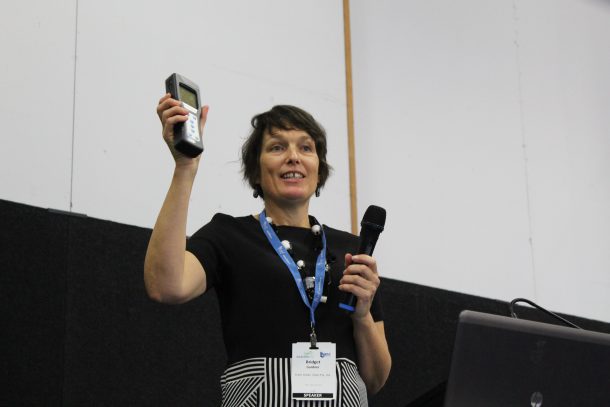
This year’s CleanNZ Expo saw the debut of a new model designed to document and accurately measure cleaning standards.
The Cleaning Activity Levels (CAL) model was developed by Fresh Green Clean director Bridget Gardner, after she awoke in the middle of the night to the question: “Why do cleaning standards focus on the type of soil to be removed?”
“Surely there is a better way to measure the performance of a role that protects the health and safety of office workers, children in schools and childcare centres, patients in hospitals, residents in aged care facilities – a role that can make or break the reputation of a hotel,” she challenged attendees at this year’s CleanNZ Expo.
“Have you ever wondered why cleaning is one of the only professions (that I can think of) that is actually judged by what hasn’t been done?” she asked.
“When we compare cleaning to painting for example, a painter is judged by the walls he has painted. A mechanic is judged by whether or not he can get your car to start. Whereas, a job well done in cleaning is a job that isn’t noticed and is judged by what hasn’t been done.”
Gardner explained the CAL model began to take form in her mind after she was woken in the night by the thought that something was wrong with the current way of defining cleaning.
“We define cleaning as the removal of unwanted dirt from surfaces, yet, I’ve researched every cleaning standard I can possibly lay my hands on from around the world and have found these standards to be highly complex documents,” she said.
“Sometimes you need a law degree to understand them. I’ve seen specifications that are more than 100 pages long – all for a job that is completed by an industry with no national standards and workers with no required qualifications.”
Gardner added that defining cleaning by the amount of dirt that has to be removed doesn’t factor in the process that goes into removing the dirt; the materials used; the equipment that had to be purchased or the skills required to complete the job.
According to Gardner, underpinning the CAL model are three core principles:
- A surface cannot be accurately defined or measured as ‘partially clean’. It is either clean or unclean.
- The cleaning outcome is determined by the cleaning process: the method, the degree of effort and the frequency.
- Cleaning standards must be defined by how cleanliness is to be measured.
The CAL model can also be used to structure the organisation’s requirements per specific building area, surface type (‘elements’), materials, risk priorities, hygiene, safety and sustainability initiatives.
“I wrote down three principles which led to the development of the CAL model,” she said.
“The number one aim of this model is to better communicate what needs to be done to the cleaners who are actually doing the job. The second is to price cleaning fairly and according to the workload. The third aim is to measure the outcomes accurately, which are then defined by what has actually been done. The fourth and final aim – which is very close to my heart because I started out in this industry as a cleaner – is to raise and increase the perceived value of cleaning.”
In her presentation, Gardner also spoke about the limitations created by the system currently in use to measure cleaning, and how cleaning operators and facility managers can use the CAL model to set and follow cleaning standards in their own organisation.
“The role of cleaning is vitally important, yet we are dumbing it down to only consider dirt on a surface. Shouldn’t the focus of cleaning be on the type of dirt to be removed?
“Today we are seeing smart buildings with sensors. What (I imagine) is going to happen is the industry having specifications and requirements that change on a daily basis based on the way these smart buildings are being used.
“If we use the same methodology that we’re using now to define cleaning (which is how much dirt has been removed from the surface) all that we are going to end up with is more cost cutting and a decrease in efficiency.”
For an in-depth description of Bridget Gardner’s CAL model, check out page 50 in the May issue of INCLEAN NZ.